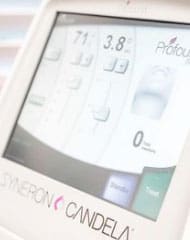When choosing lipo, Tampa patients often think that because it’s a body sculpting procedure, the process can help get rid of cellulite as well. In fact, the opposite is often true; liposuction may actually make cellulite more visible.
The Lipo Process
To understand why cellulite isn’t removed by liposuction, it’s necessary to learn more about how liposuction works. A small incision is made near the area targeted for treatment, and a slim hollow surgical wand, or cannula, is inserted through the incision. The cannula is used to break up and remove fatty deposits deep under the skin that are resistant to diet or exercise.
Liposuction isn’t an alternative to weight loss, but it can help to slim and shape “problem” areas of the body, like love handles or tummy paunch.
Understanding Cellulite
Cellulite isn’t just lumpy fat, like many believe. Instead, it appears when the network of connective tissues just under the skin, called septae, is weak. These strands hold the fat in place. If they don’t form a tight, containing web over the fat, then the fat will bulge out in between and create ripples that are visible on the surface of the skin.
The bottom line is that cellulite is structural, and lies in the subcutaneous fat layer, just under the skin. Liposuction removes the fat deposits that lie in much deeper layers. Although these deep pockets of fatty deposits can be reduced through lipo, Tampa patients will not be able to have cellulite removed by the same method. It simply isn’t the way lipo works.
After liposuction, the outer layers of skin will shift to accommodate the lack of underlying fat support. This change in skin tone can in some cases magnify the appearance of cellulite, especially if skin remains lax and doesn’t tighten up again after the liposuction.











